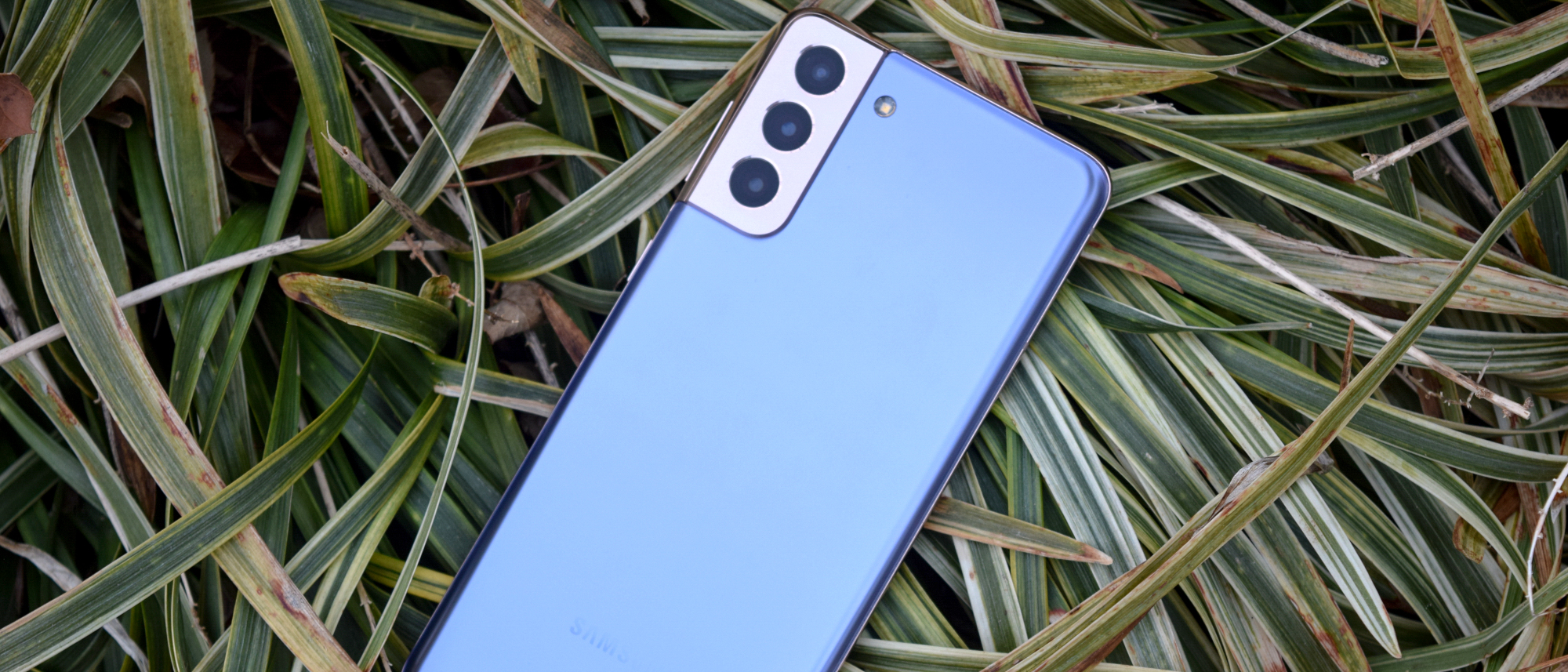Tom's Guide Verdict
The Galaxy S21 Plus sits in a weird spot between the Galaxy S21 and Galaxy S21 Ultra, but it features almost everything good about the regular S21 in a bigger package.
Pros
- +
Gorgeous 120Hz AMOLED display
- +
Excellent performance
- +
Crazy zoom feature
- +
Beautiful design
Cons
- -
Bulky and unwieldy
- -
No microSD slot or included charger
- -
Inconsistent camera
Why you can trust Tom's Guide
OS: Android 11 / One UI 3.1
Screen size: 6.7-inch Dynamic AMOLED (2400 x 1080)
Refresh rate: 48Hz - 120Hz
Processor: Snapdragon 888
RAM: 8GB
Storage: 128GB, 256GB
Rear cameras: 12MP wide (f/1.8), 12MP ultra-wide (f/2.2), 64MP telephoto (f/2.0) with 3x hybrid zoom/30x digital
Front camera: 10MP (f/2.2)
Video: Up to 8K at 24 fps
Battery: 4,800 mAh
Battery life (Hrs:Mins): 09:41 (adaptive) / 09:53 (60Hz)
Charging: 25 W (charger not included)
Colors: Phantom Black, Phantom Silver, Phantom Violet, Phantom Red, Phantom Gold
Size: 6.36 x 2.98 x 0.31 inches
Weight: 7.05 ounces
The Samsung Galaxy S21 Plus once again proves why Samsung is the dominant Android phone manufacturer. The company pioneered things we take for granted nowadays like huge displays. Samsung has previously taken a “throw everything at the wall to see what sticks” kind of approach. And although it might’ve seemed silly at points in the past, this MO has given us mainstay features.
With the Galaxy S21 Plus, however, Samsung takes a step back, restraining itself to instead offer a compelling, big screen device. All of the over-the-top focus was on the Galaxy S21 Ultra, while the Galaxy S21 and S21 Plus are more iterative upgrades on their S20 predecessors.
- How to remap the Bixby button on Galaxy S21
- How to take portrait photos on Galaxy S21
- Galaxy Z Flip 3 vs. Galaxy S21 Plus: Which Samsung phone should you get?
Though we are conditioned to not only want the newest thing — and to that end, the Galaxy S22 Plus has come out since we first published this review in 2021 — we’re also taught that the latest version ought to offer significant upgrades. Some might see a few of the design choices with the Galaxy S21 Plus to be downgrades or Samsung standing in place, but I argue that’s not the case. Despite feeling like the awkward middle child of the S21 family, the S21 Plus offers a lot to love.
Samsung Galaxy S21 Plus review cheat sheet
- The Galaxy S21 Plus uses a big, beautiful 6.7-inch Dynamic AMOLED display with an adaptive 120Hz refresh rate and HDR10+ support. Colors pop, text is very crisp, and the screen gets very bright.
- The S21 Plus’ 3x hybrid optic zoom telephoto lens lets you get very close to your photo subject. As part of the new Space Zoom feature, Samsung uses AI to lock the camera on your subject, minimizing hand shake.
- The in-display fingerprint sensor on the S21 Plus is larger than the one on previous Galaxy devices; it’s also fairly accurate.
- At $999, the Galaxy S21 Plus is a pricey phone that is the same in nearly every regard to its smaller, $799 sibling, the Galaxy S21. The main differences between the two are the size of the screen and the battery.
- Battery life is okay in daily use and the Galaxy S21 Plus supports 25W fast charging. However, there is no charger included in the box.
Samsung Galaxy S21 Plus review: Release date and price
In the US, the Galaxy S21 Plus starts at $999 for the 128GB model. That’s a $200 drop from the Galaxy S20 Plus’ starting price. An extra $50 doubles the storage on the Galaxy S21 Plus to 256GB. In the UK, the S21 Plus starts at £949, with the 256GB variant costing £999. For reference, the Galaxy S20 Plus launched at £999 in 2020. You can purchase the Galaxy S21 Plus directly from Samsung or through your carrier. Before you do, check out the best Galaxy S21 deals to see if there’s ways to save on the Galaxy S21 Plus.
The Galaxy S21 Plus’ price is identical to the iPhone 12 Pro. You can also draw comparisons between the Galaxy S21 Plus and Google’s $699 Pixel 5, which despite having lower-tier specs still kicks above its weight in raw camera performance.
Since Samsung copied Apple and didn’t include a charging brick, you’ll need to figure out a charging solution. If you have a 25W brick from the S20, or something similar, you’re good. But if you’re using an older USB-C charger, you’ll want to consider a wireless charger or the $20 25W wall charger from Samsung. You will get a USB-C cable with the phone, though.
Samsung Galaxy S21 Plus review: Design
On its face, the Galaxy S21 Plus looks quite similar to the Galaxy S20 Plus. It has very appealing slim bezels with a single hole punch cutout for the front camera in the center of the top edge of the display. Depending on which color you picked — the Galaxy S21 comes in Phantom Black, Phantom Silver or Phantom Violet — you can also see the edge of the frame around the bezels, making for an attractive device. The screen is now flat instead of curved, which may not look as pretty, but leads to fewer inadvertent touches.
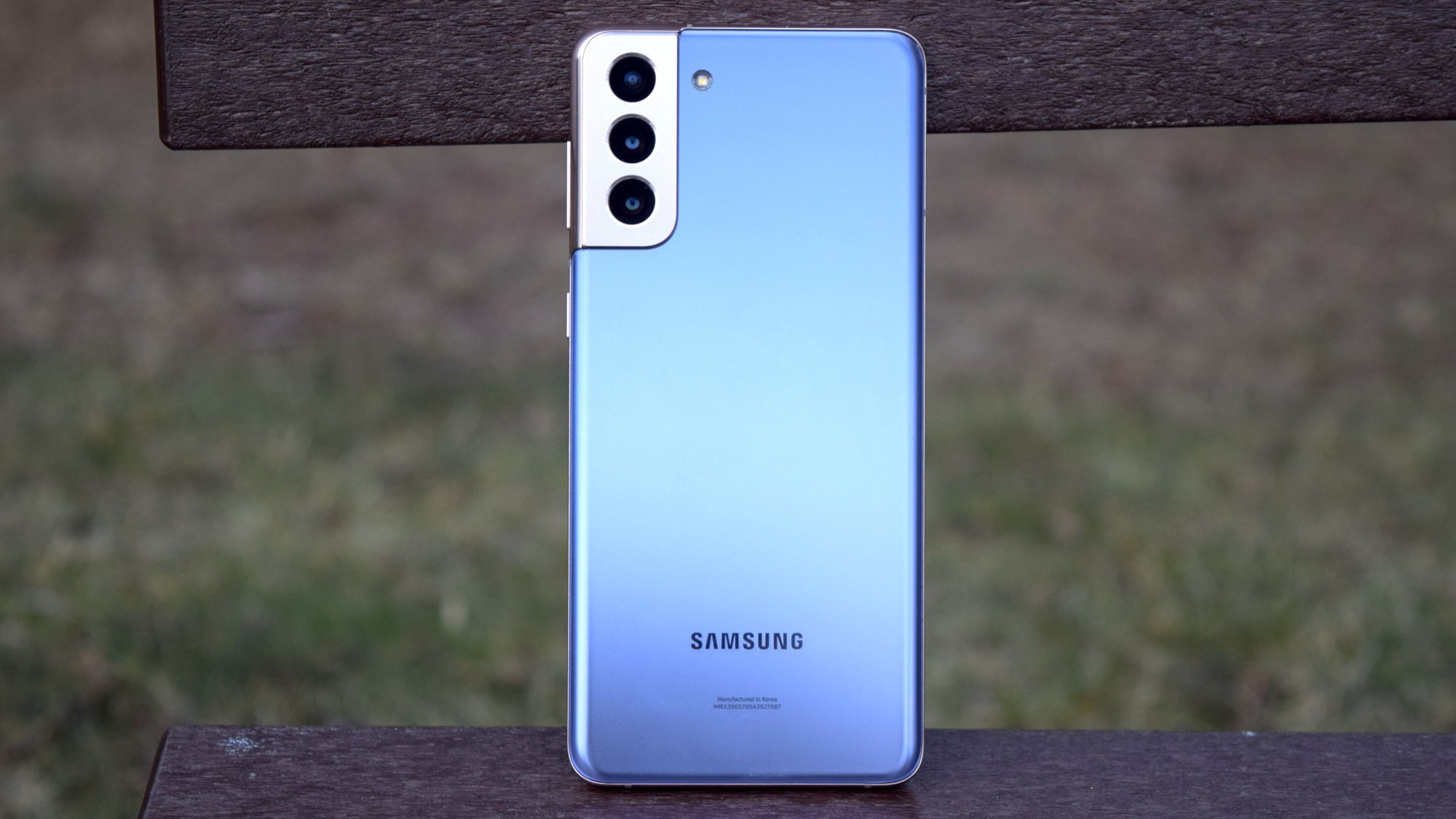
It’s on the back that Samsung made some changes from last year’s S20 Plus. The triple camera module no longer sticks out on its own, instead melding seamlessly into the frame in what Samsung calls the contour cut design. Though the S21 Plus still has a noticeable camera hump, it looks less awkward than its predecessor’s.
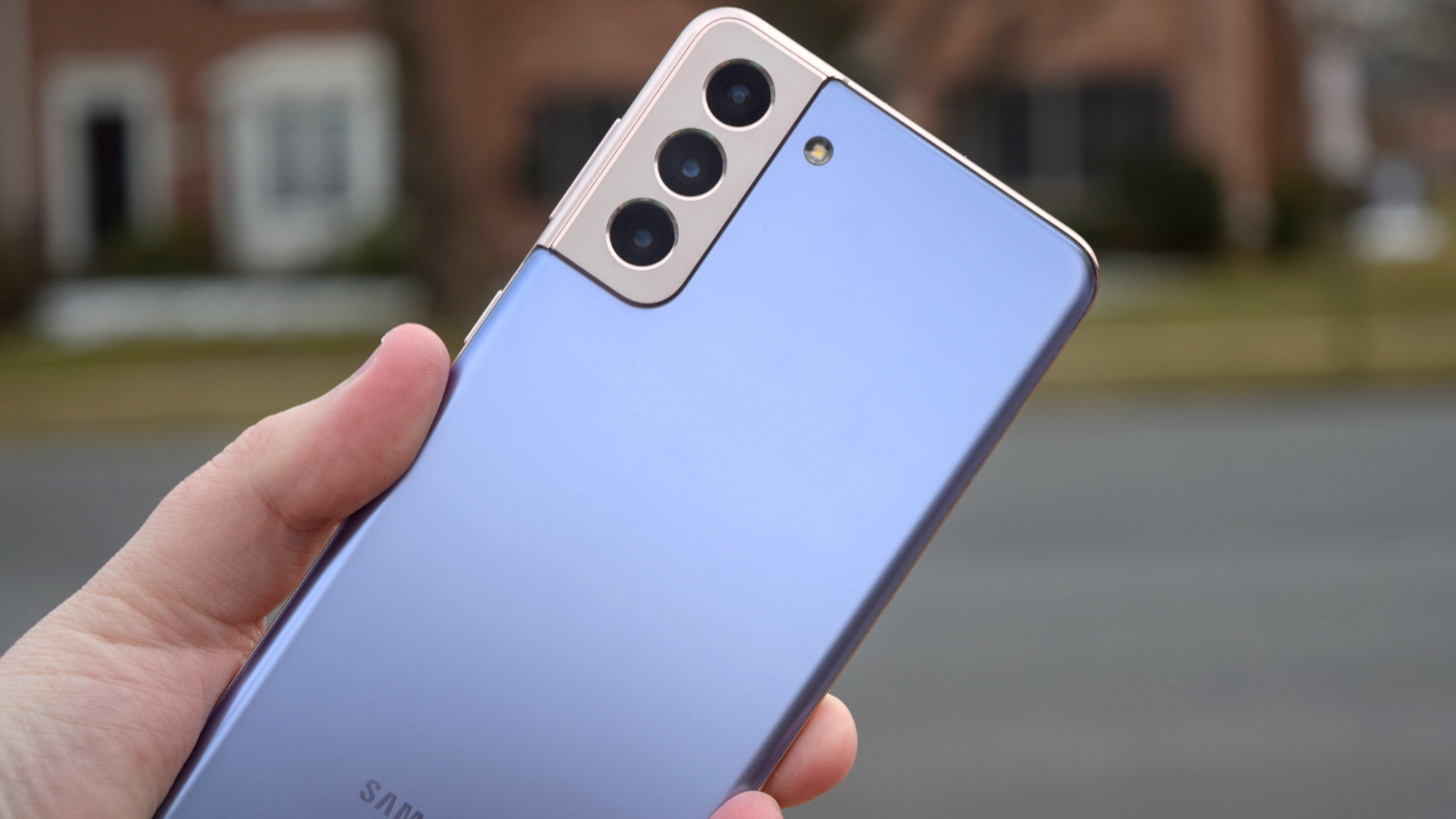
Smooth to the touch, the back doesn’t show fingerprints or smudges very easily. Despite its size, I noticed that the Galaxy S21 Plus didn’t slip around in my hand. It's a very grippy device that I haven't worried about dropping or sliding out of my pocket.
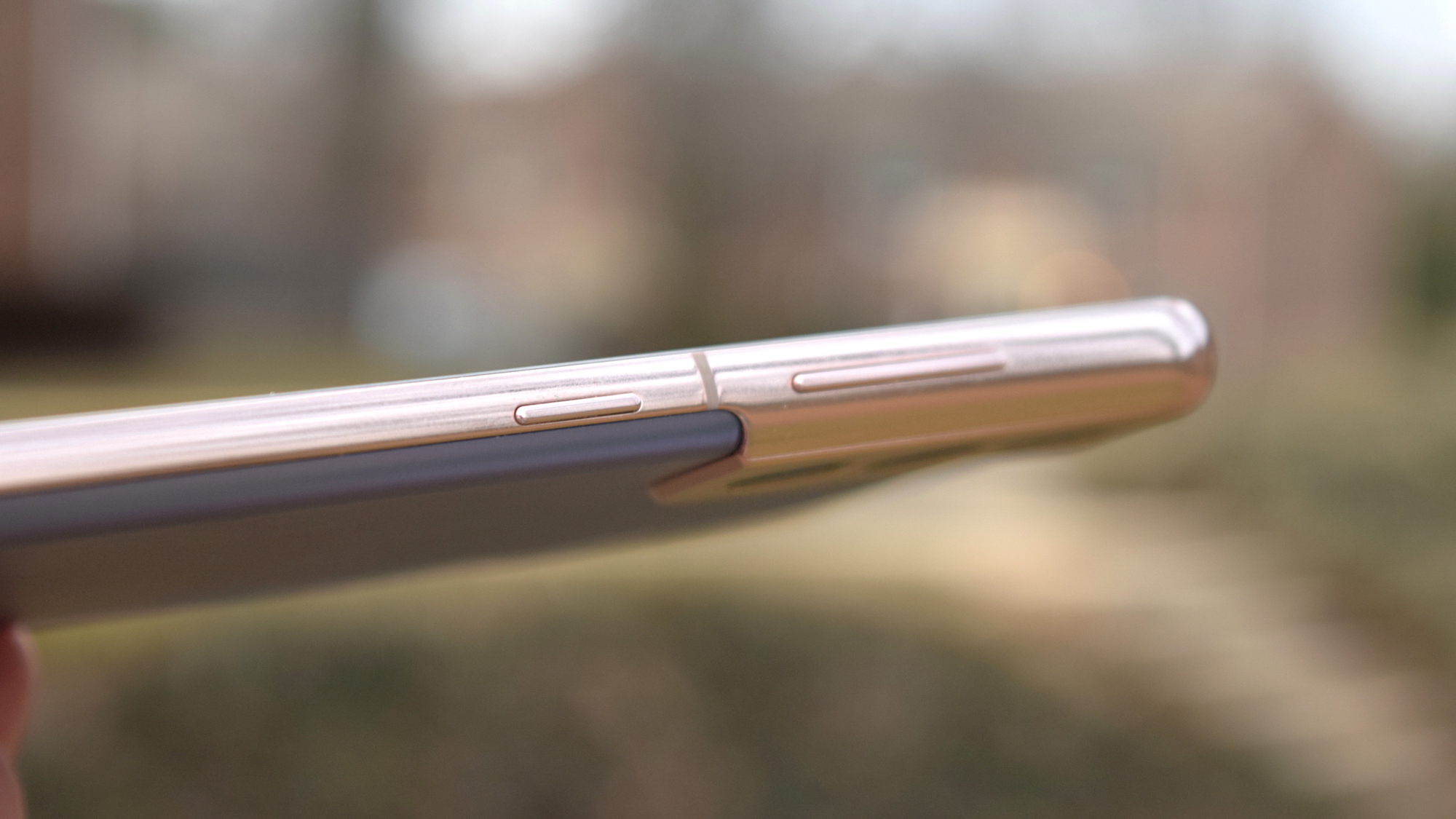
The Galaxy S21 Plus is not a small phone at 6.36 x 2.98 x 0.31 inches, weighing in at 7.05 ounces. It’s practically the same size as the Galaxy S20 Plus (6.37 x 2.90 x 0.31 in, 6.56 oz). One-handing the Galaxy S21 Plus can be difficult, especially if you have smaller hands. If big phones are your thing, though, this one will make you happy.
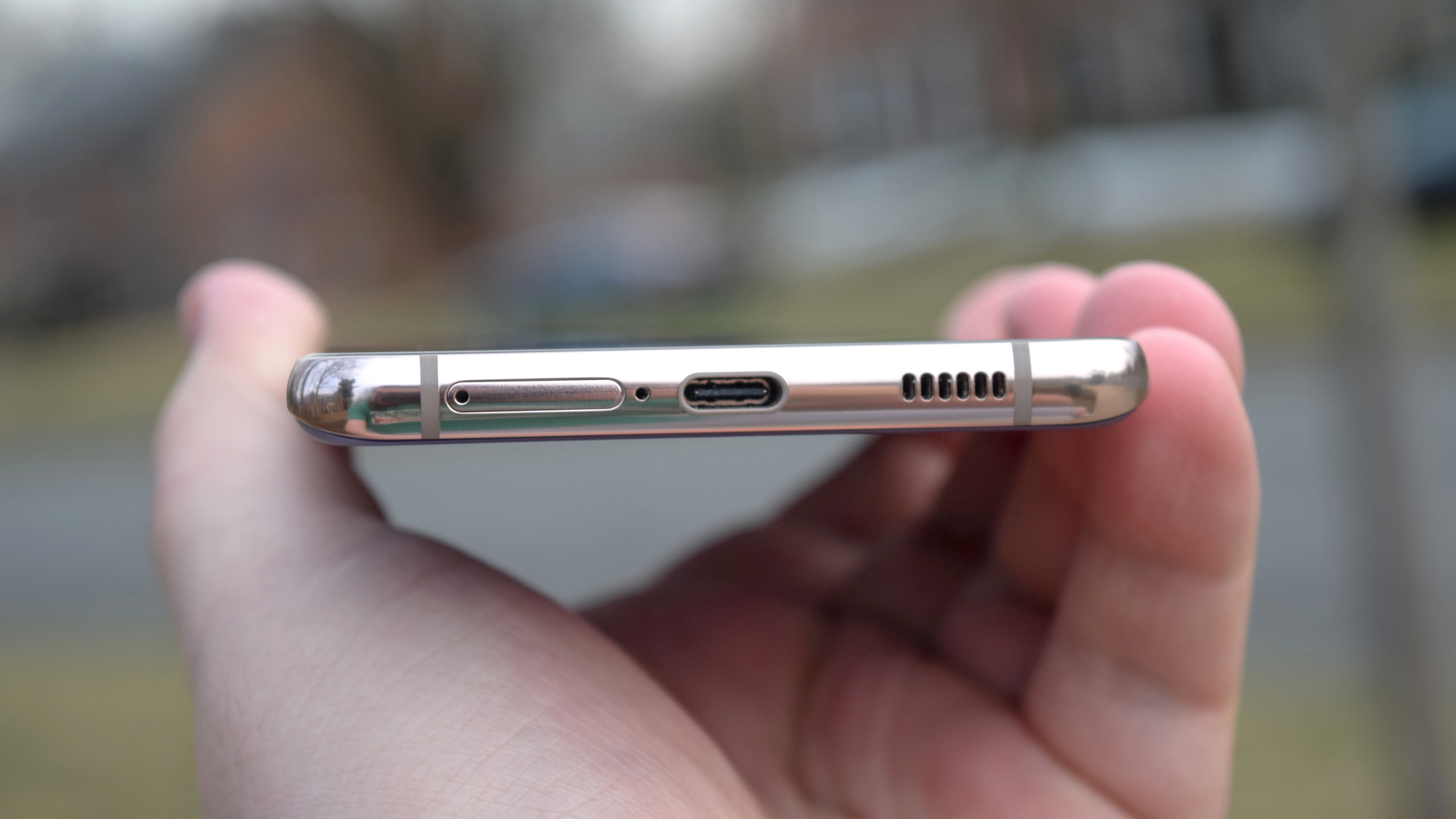
Samsung touts the new and improved fingerprint sensor under the display, which is 1.7x larger and 50% faster than its predecessor. While previous models have had varying degrees of accuracy, the sensor in the S21 Plus is quite reliable. It’s quick and very accurate.
Samsung Galaxy S21 Plus review: Display
For the Galaxy S21 and S21 Plus, Samsung “downgraded” the display to a 1080p resolution. However, you can have the 120Hz adaptive mode enabled at all times at this resolution. Contrast this to the Galaxy S20 Plus last year, where you had to choose between QHD 60Hz and 1080p 120Hz. Now, you just choose which refresh rate you want.

If you want things to be as buttery smooth as possible, then leave your S21 Plus display on the adaptive mode. This will let the display’s refresh rate shift between 48Hz and 120Hz, which means that phone can adapt to your use and save battery life where possible. If you want to get the most out of your battery, however, then lock the display to 60Hz and let it be. You’ll be missing out on noticeable differences, but at least Samsung offers the choice.
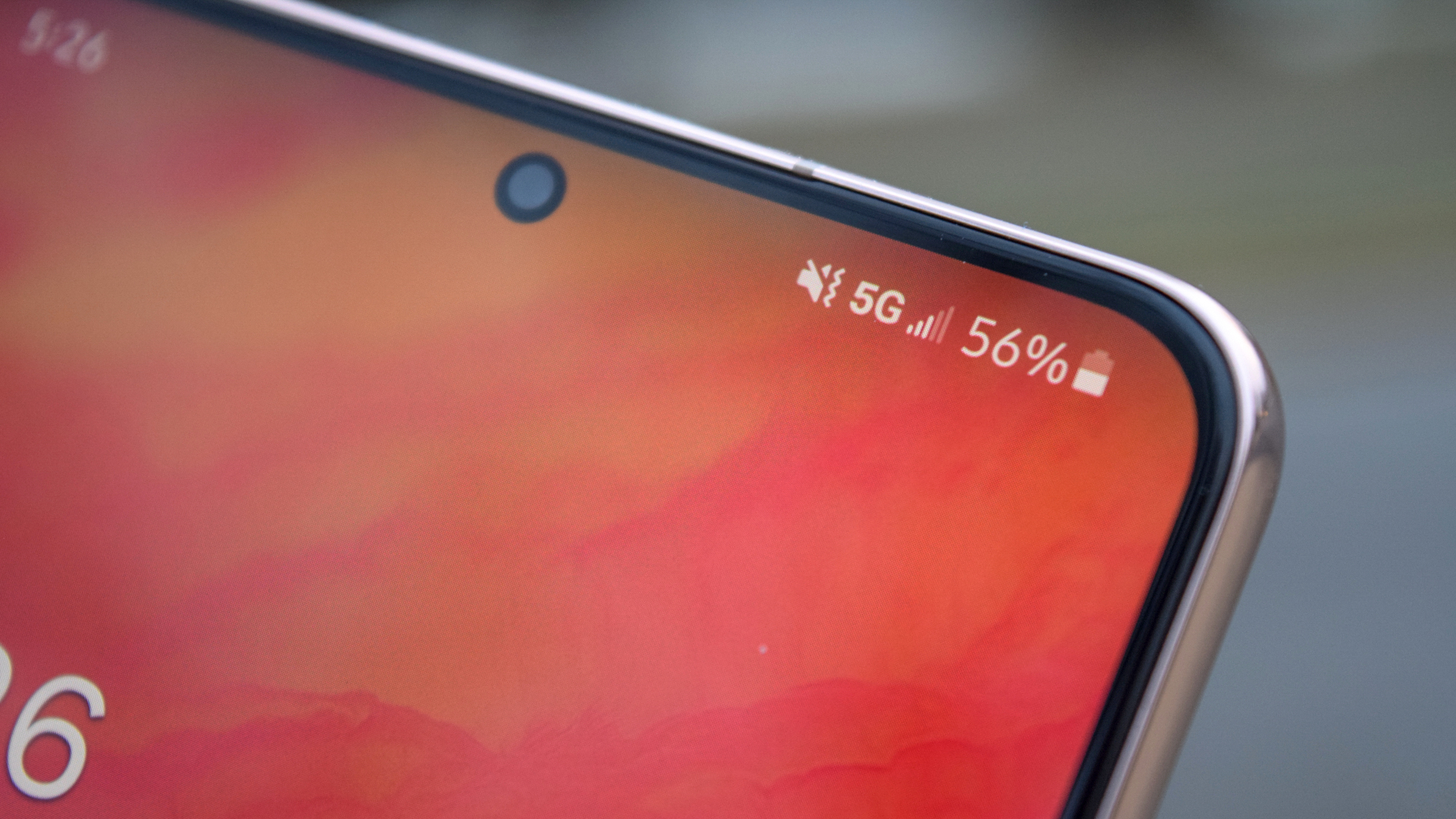
Moving onto the quality of the display itself, Samsung opted for a top-tier screen after all. In both the Natural and Vibrant settings, colors pop and blacks are very deep. It gets plenty bright enough for direct sunlight, while media, games or videos, look great on this screen.
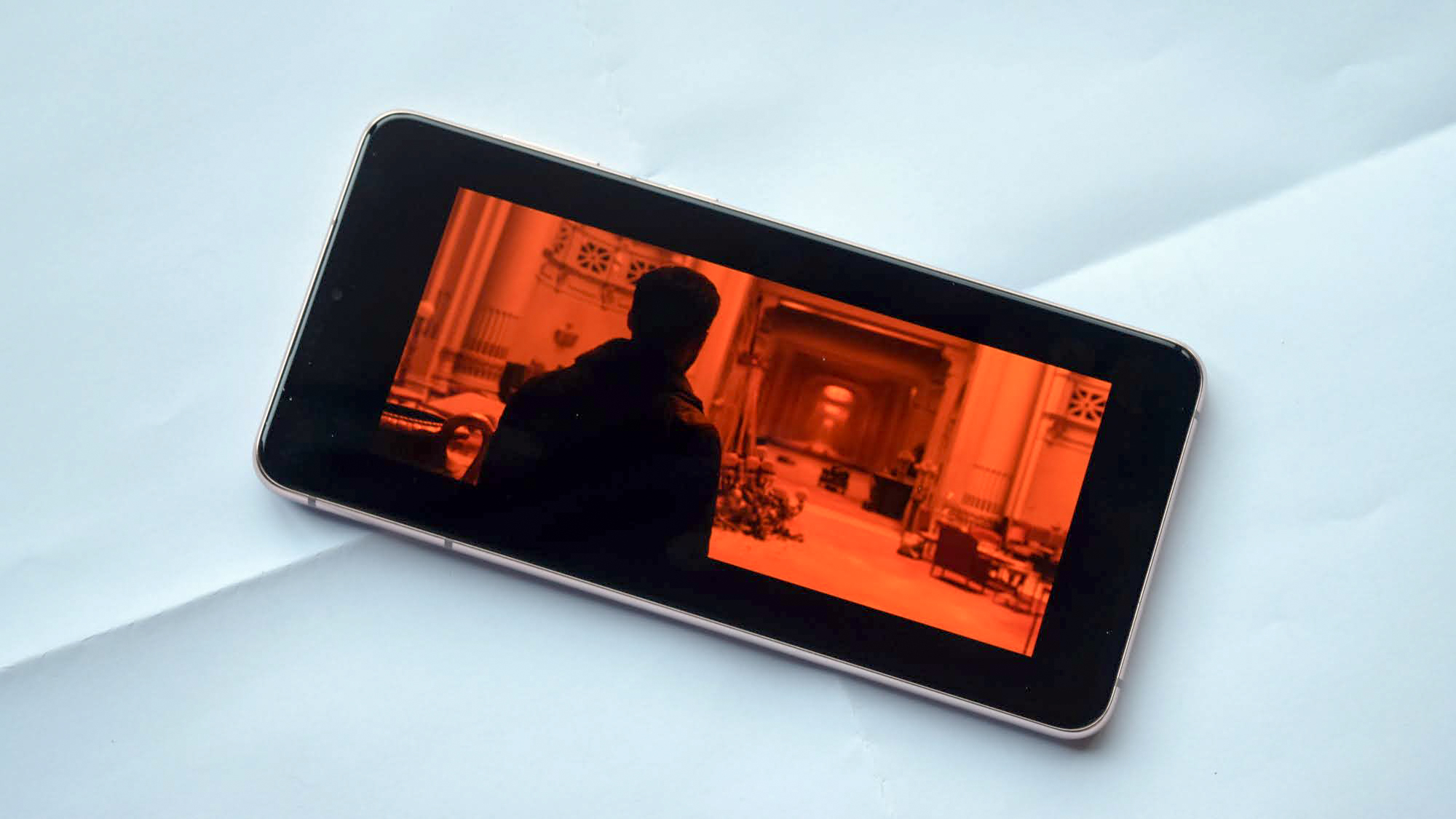
In our lab testing, the Galaxy S21 Plus managed 103.8% of the sRGB space and 73.5% of DCI-P3 in Natural mode. In Vivid, the phone hit 212.3% of sRGB and 150.4% of DCI-P3. The iPhone 12 Pro, meanwhile, reproduced 115.6% of the sRGB color gamut and 81.9% of DCI-P3. And finally, for its Delta-E color accuracy rating, the S21 Plus got a 0.18. That handily beats both the Galaxy Note 20 Ultra (0.24) and iPhone 12 Pro (0.28), as numbers closer to zero are more accurate.
Whatever mode looks best to you, Vivid or Natural, you’ll have one of the best smartphone displays around. I really enjoyed watching and playing things on this phone. I checked out Blade Runner 2049 from my Plex server, which has scenes later in the movie with harsh orange tones. The Galaxy S21 Plus handled these wonderfully.
Samsung Galaxy S21 Plus review: Cameras
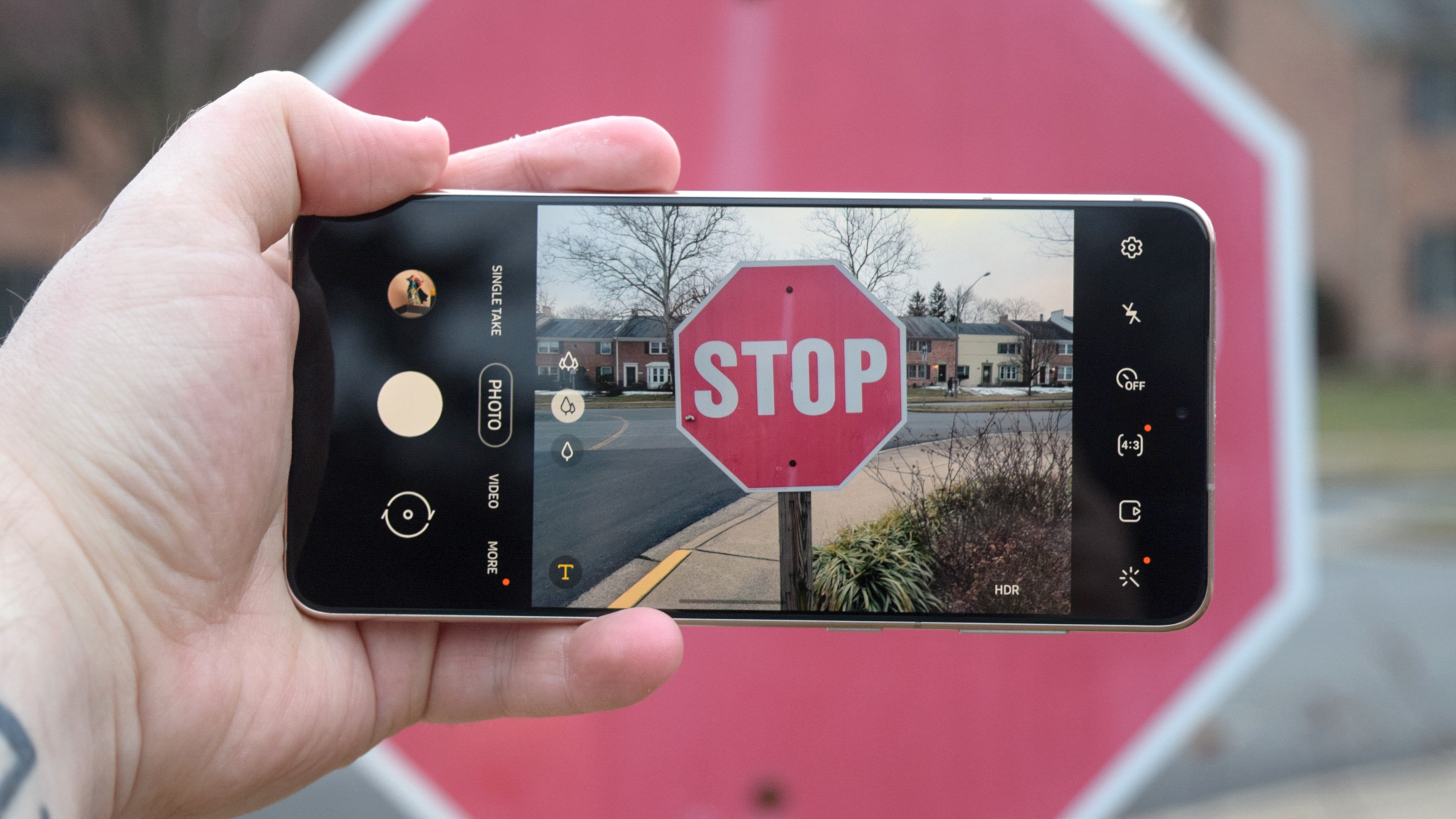
The Galaxy S21 Plus uses the same camera setup as the Galaxy S20 Plus. It features 12MP wide-angle, 12MP ultrawide, and 64MP telephoto lenses. The latter camera sports a 3x hybrid optic zoom and 30x space zoom. Samsung’s trump card this year, however, comes down to software, as it finally learned from Google and that company’s Pixel 5.
But now that the Galaxy S22 is the new kid on the block, Samsung has announced that it's bringing some of that phone's camera features to the Galaxy S21 Plus, like nighttime portraits with the telephoto lens.
I tested the default photo mode of the Galaxy S21 Plus against the iPhone 12. (I don’t have a 12 Pro for photo comparisons, but with the exception of a telephoto lens, the iPhone 12 gives the S21 Plus a pretty fair fight.) Right off the bat, you can see the Galaxy S21 Plus saturates the photo more than the iPhone 12’s image — too much so in my opinion. Apple’s device also captures the shadows better, whereas the S21 Plus bumps up the exposure and flattens a lot of the blacks.
For another outdoor shot, t the Galaxy S21 Plus managed to capture the car’s details fairly well considering that I took this shot in direct sunlight. You can see the red stripes along the Mini’s skirt and the brake rotors behind the spokes of the rims. The refracting sunlight isn’t so harsh, either. Meanwhile, the iPhone’s shot has that awful lens flare ruining the whole image. You can still make out some details, but overall I think the iPhone effort is a worse photo.
Moving indoors to my office, the Galaxy S21 Plus once again brightened everything up in this picture of the office decor, with the color on my metal poster looking a bit washed out. The iPhone 12 produced something much truer to life with more realistic colors. While still well-lit, the iPhone’s shot captures the warm tones of the wood paneling, the soft grey of the concrete Celtic cross, and just a bit of the tiny dots of color in the cross-stitch pattern.
Once again, when testing portrait mode, both phones took two different approaches. The Galaxy S21 Plus photo is more true-to-life with a soft blur radius. I’m in clear focus with accurate colors. The iPhone 12 cooled everything down significantly, possibly due to the combination of shadows with the snow in my backyard. The blur radius is similar to the S21 Plus’, but everything from my face to the smoker behind me is way too cool. Even the sky is too blue. This was consistent across portrait shots.
At night, the Galaxy S21 Plus tends toward darker photos compared to the iPhone 12. The Galaxy S21 Plus still retains a lot of detail, even if it is a bit darker. The iPhone 12 is noticeably brighter with deeper shadows and more detail in the bricks. Both are quite good, but I like the iPhone 12’s night mode performance better.
For the front-facing camera, I stepped into the shadows behind this row of townhouses. Right away, you can see how cool and smoothed the Galaxy S21 Plus’ shot is. The blue of my eyes appears despite a bit of a squint, the grey of my shirt is truer to life, and the fences behind me are the right colors. On the other hand, the iPhone’s selfie is a bit weirder. Notice how everything got warmed up, like the tint and black level correction got overtuned. My face appears much redder than usual, my beard looks darker than it is, and the wood fences seem a bit off.
Finally, Samsung stresses the zoom capabilities with its new phones. The S21 Plus offers a 3x hybrid optical zoom telephoto lens, which is already neat for far away shots. But with that comes Space Zoom, which can net you up to 30x zoom photos, letting you capture things that are ridiculously far away. For quick reference, here’s the S21 Plus’ max zoom versus the iPhone 12’s. You can easily spot the differences, and it’s no contest between the two. The S21 Plus could pick up the pink stool at the very end of the road, whereas you can barely see it in the iPhone 12’s picture.
As far as video, the Galaxy S21 Plus can go all the way up to 8K at 24 frames per second (fps). If you want something a bit more reasonable, the phone also supports 4K at 60 fps and 1080p at 120 fps. All told, you can have super smooth, high resolution videos that look awesome later when you go to watch them. If you opt for 1080p at 60 fps, you can use the Super Steady mode, which utilizes AI to help eliminate hand shake in your recording, making for an even smoother video.
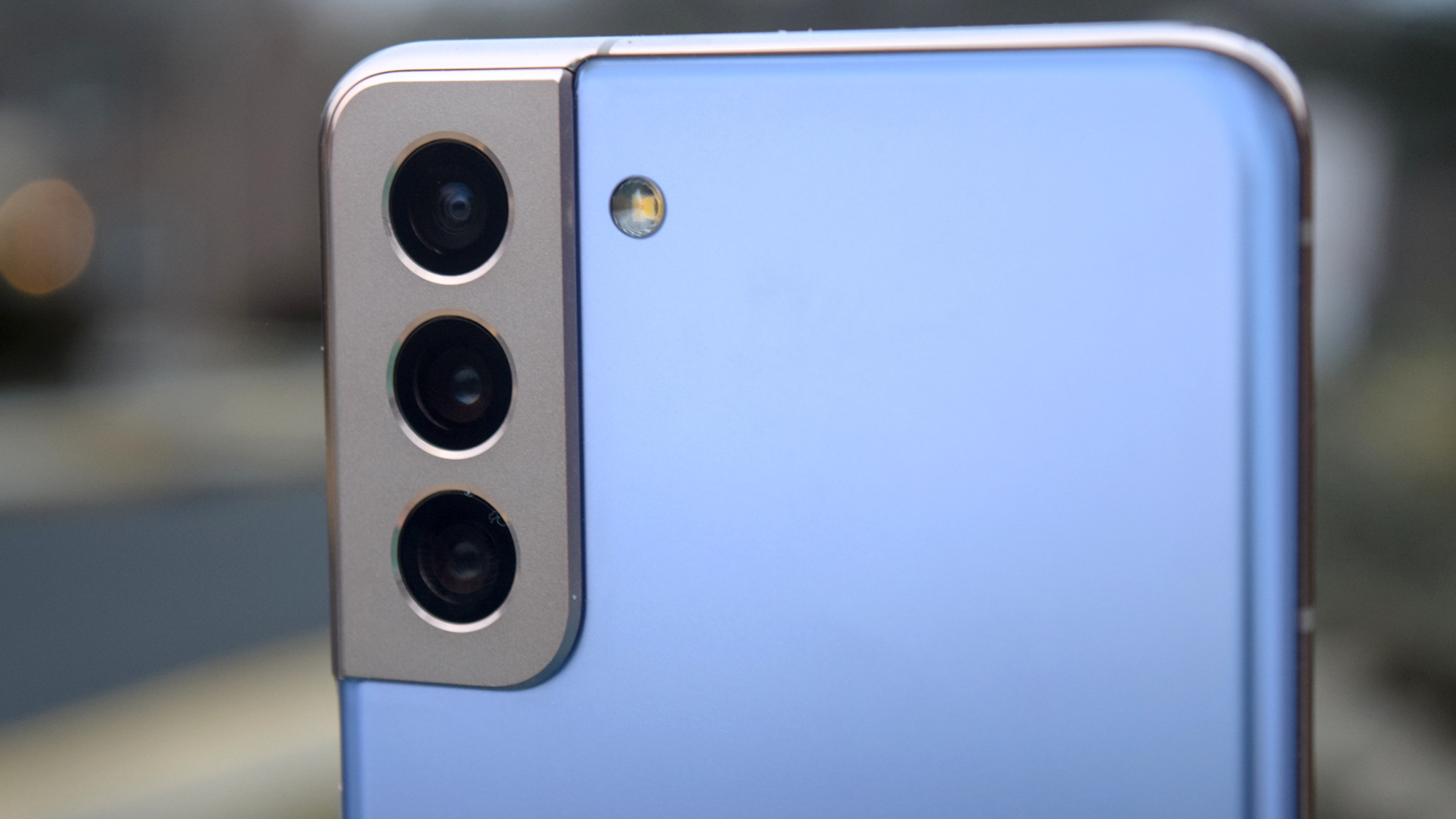
If you’re really into vlogging, you can switch on Director Mode, which activates both the rear and front cameras for recording at the same time. Director Mode also generates live thumbnails from all of the S21 Plus’ lenses.
Some of the other features Samsung packed into the Galaxy S21 Plus’ camera include the portrait video and an updated version of Single Take. The former is just what it sounds like, where the subject of the video is kept in focus while the background remains blurred. The blurring can get a little overzealous when you move the camera around, but it’s all around pretty solid.
Single Take lets you choose from a selection of the best shots in a given scene. The S21 Plus will actually capture multiple photos at a time, so that you can pick the best one for your needs. This might be helpful if your pet or child happens to move while you attempt to photograph them.
Samsung brought to bear its best with the Galaxy S21 Plus’ cameras. It goes head-to-head with other heavyweights like Google and Apple and holds its own quite well. While I don’t have a Pixel 5 to test it against, you can check out the camera section of our Galaxy S21 review to see how these cameras compare against Google’s latest. In the end, the S21 Plus’ cameras really impressed me. Although the phone’s cameras like to oversaturate and overexpose sometimes, the photos that it produces come out nice most of the time.
Samsung Galaxy S21 Plus review: Performance
U.S. versions of the Galaxy S21 Plus uses Qualcomm’s new Snapdragon 888 system-on-chip (SoC. (In the rest of the world, your S21 Plus is powered by the Exynos 2100.) Compared to the Snapdragon 865, the 888 promises 20% better CPU performance, 35% improvements in GPU speed, and upgrades to the AI capabilities. Samsung paired this processor with 8GB of RAM in the Galaxy S21 Plus, making for a very powerful phone.
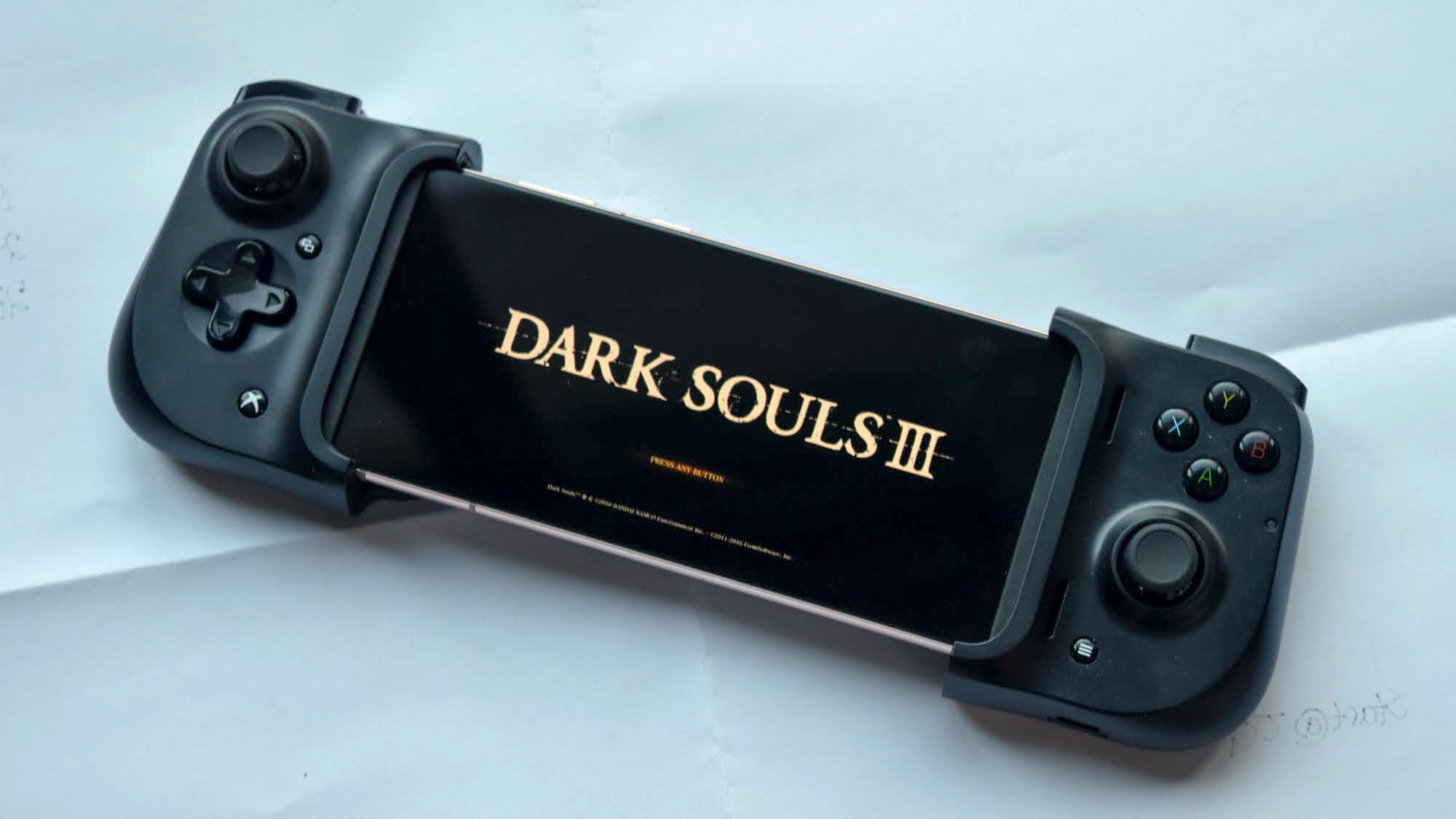
Unlike the Galaxy S20 Plus, there’s no 12GB RAM option with the S21 Plus, but most people don’t need that much memory in the first place. Power users can always turn to the Galaxy S21 Ultra, which will better suit their needs with its 12GB and 16GB options. So the S21 Plus losing 4GB of RAM in today’s age isn’t as bad it might seem. Android has gotten better with memory management and Samsung has a few tweaks in One UI to help with that, too.
In testing, the Snapdragon 888 still falls behind Apple’s A14 Bionic SoC. For Geekbench 5, which measures single- and multicore performance, the Galaxy S21 Plus hit 1,116 in single-core and 3,300 in multicore. Compare the latter to the results of the iPhone 12 (3,859) and the iPhone 12 Pro (3,880).
For the GPU, we used the 3DMark Wild Life Unlimited test, which pushes the GPU hard to render challenging scenes in real time. The Galaxy S21 Plus managed a final score of 5,571 with an average fps of 33.37. Compare this to the iPhone 12 Pro’s 6,567 and 39 fps.
Finally, we ran the Galaxy S21 Plus through a video transcoding test, where the phone must transcode a 4K video to 1080p in the Adobe Premiere Rush app. The S21 Plus managed a time of one minute, the best we’ve seen from an Android phone. But as good as that task was, the iPhone 12 Pro did the same task in a mere 27 seconds.
Once again, the iPhone beats the leading Android devices in raw performance, but synthetic benchmarks don’t tell the whole story. In daily use, I didn’t find the Galaxy S21 Plus to be lacking in any regard. I played Call of Duty: Mobile, Pascal’s Wager, and Grid Autosport on max settings, all of which push the phone hard. The phone handled all of them brilliantly. I also tried some Xbox Game Pass and Steam Link streaming to it with no problems. The Galaxy S21 Plus also works well with the Razer Kishi gamepad, which levels up mobile gameplay considerably in the games that support it.
Samsung Galaxy S21 Plus review: Battery life and charging
As with display size, the Galaxy S21 Plus sits right in the middle of the S21 and S21 Ultra when it comes to battery life. The S21 Plus and its 4,800 mAh battery turned in a so-so performance in our battery tests and even threw in a little surprise for us.
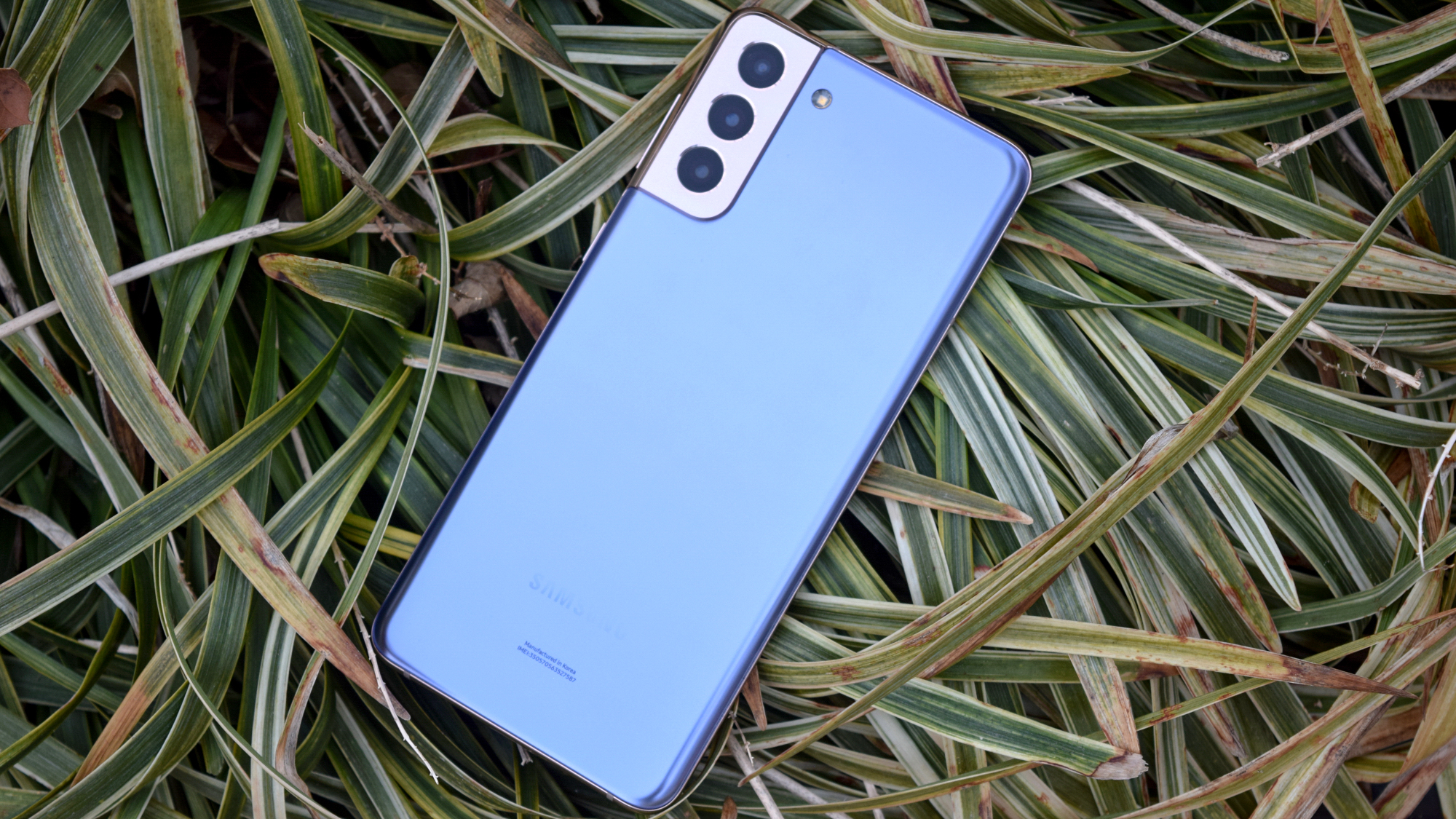
Tom’s Guide’s proprietary battery test involves a phone being left to endlessly load webpages over and over using a cellular connection. We tested the S21 Plus on both adaptive and 60Hz modes on T-Mobile 5G.
In adaptive mode, the Galaxy S21 Plus reached 9 hours and 41 minutes, which is just shy of the 10-hour mark we see on average. For reference, the Galaxy S21 Ultra hit 10:07 in adaptive mode, while the Galaxy S21 managed 6:31. So 9:41, while not great, is respectable. Meanwhile, in 60Hz mode, the S21 Plus reached 9:53. Compare that to the S21 Ultra’s excellent 11:25 and the S21’s 09:53.
That result surprised us. As you can see, there’s quite a disparity between the 60Hz and adaptive modes in terms of battery life for the S21 and S21 Ultra. However, the S21 Plus has nary a noticeable difference between the two, meaning that you don’t save a lot of battery life by using the 60Hz mode on this phone.
As you’ve heard by now, none of the Galaxy S21 phones come with a charger. They do include a USB-C cable so that you can use a charging brick you already own. Or, you can buy one separately at your discretion. The phone supports up to 25 W of fast charging, and you also have the wireless charging route if you so choose.
Samsung Galaxy S21 Plus review: Software and One UI
Until very recently, Samsung had a lousy reputation for software. But when Samsung introduced One UI a couple of years ago, things changed. It proved that the phone maker was taking software seriously and offering a more mature skin, something more akin to Google’s stock Android.
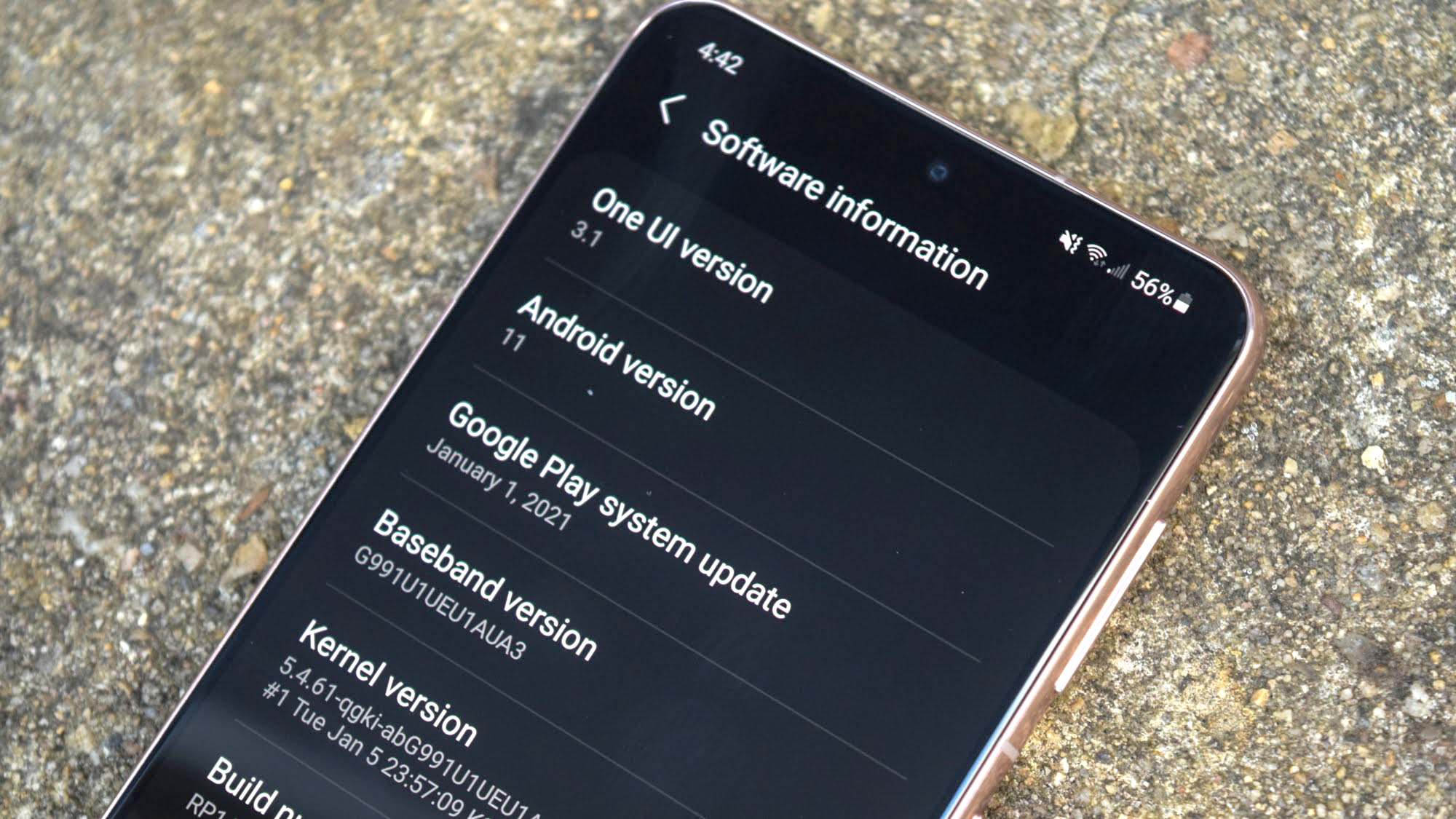
One UI looks nice, feels slick in its animations and transitions, and does a fairly good job at staying out of the way while offering useful features. Samsung made something that offers elegance that doesn’t feel bloated. Sure, the S21 Plus has unnecessary apps pre-installed, but a surprising amount can be uninstalled and you can disable the rest. Overall, a lot of people will like the One UI experience.
With the Galaxy S21 series, Samsung introduced One UI 3.1, which came with several changes. A few of these include the Google Discover feed integrated into the stock launcher, Google Home device controls, Google Duo baked into the stock phone app, video call effects, and several enhancements to the camera app.
Not all is well with One UI, however. Samsung wants you to use its features out of the box, including Edge Panels and the Bixby shortcut. Considering how useless Bixby is, even when compared to Siri, I highly recommend changing what a long press of the power button does so that it no longer wakes Bixby. We have some quick Galaxy S21 tips to get you started.
I replaced the S21 Plus stock launcher with some of the best Android launchers — first Nova, then Niagara. The paginated app drawer in the One UI launcher is frustrating and I thought it a relic of the long-forgotten past. Out of the box, Samsung organizes the apps in some nebulous, contextual manner, but when you have a lot of them, things can get irritating. Luckily, you can organize the drawer alphabetically.
Samsung could address a lot of my One UI complaints by offering more choices during initial setup. It could let you choose your navigation model (nav bar or gestures) and whether you want certain features enabled or not, for example. A lot of people simply won’t spend a lot of time digging through the settings menus to find what they want.
One UI 4, which has come out since the S21 Plus' release, adds some measure of customization. And the One UI 4.1 update rolling out now brings Galaxy S22 features to existing phones like the Galaxy S21 Plus. These include a lot of camera app improvements like Night Portrait mode, pet recognition, lighting position editing, and a portrait mode when shooting video with the telephoto lens.
Additionally, the arrival of the Galaxy S22 lineup has brought another change to last year's flagships. Samsung now promises four years of software updates for its flagship phones. That means, even with Android 12 now on the S21 Plus, you can expect three more iterations of Google's phone software.
Samsung Galaxy S21 Plus review: What about the Galaxy Z Flip 3?
The Galaxy Z Flip 3 is right around the corner, and it's rumored to start at $999 like the Galaxy S21 Plus. But beyond just folding up in half, does the Z Flip 3 stand to offer as much as the S21 Plus does? We can only go off of rumors right now, but the short answer is: We think the S21 Plus will be the better phone.
For starters, the Z Flip 3 looks like it'll only have two cameras, and we'd guess that the second one is an ultrawide. That means no telephoto on the Flip 3. Furthermore, we've heard that the battery on the foldable won't be as large as the S21 Plus', meaning that it won't last nearly as long as the more traditional S21 Plus.
We'll have to see how the two phones compare once we have them both in hand.
Samsung Galaxy S21 Plus Android 12 update
Samsung released One UI 4 for the Galaxy S21 Plus in mid-November 2021. This update brings Android 12, which offers several key improvements to the UI and privacy elements. You can now choose your system accent color with the Color Palette, or access the privacy dashboard to see which apps are using your mic, camera, and location.
While Samsung has modified something from what you'll find on a Pixel phone, you can read our Android 12 review to learn more about what you can expect with the update.
Samsung Galaxy S21 Plus review: Verdict
All told, Samsung nailed it with the Galaxy S21 Plus. It has most of the strengths of the smaller S21 in a bigger package. If you don’t want to shell out $1,199 for the Galaxy S21 Ultra, the Plus model is the next best choice if you prefer a big phone.
Samsung might have pared back the features on the S21 and S21 Plus, but I think it works in this phone’s favor. Having the display tuned down to 1080p works just fine, especially in the adaptive refresh rate mode.
If you’re using a Galaxy S20 Plus, however, this isn’t a worthy upgrade. The software features Samsung introduced with the S21 will trickle down to your device, if they haven’t already. You still have excellent performance, an awesome display, and plenty of camera power to keep you happy.
Moreover, if you’re using a Galaxy S20 FE, then I strongly recommend against upgrading to the Galaxy S21 or S21 Plus. Samsung put out a great phone with the S20 FE and it’s honestly the best Android competitor to the S21 and S21 Plus at this point. Other than the Snapdragon 865, the S20 FE is remarkably similar to its S21 cousins (the Ultra notwithstanding).
The Galaxy S21 Plus is not a bad purchase at $999. It’s got a lot going for it. If you’re coming from an older device, like the Galaxy S10 series, this is a solid upgrade.

Jordan is the Phones Editor for Tom's Guide, covering all things phone-related. He's written about phones for over six years and plans to continue for a long while to come. He loves nothing more than relaxing in his home with a book, game, or his latest personal writing project. Jordan likes finding new things to dive into, from books and games to new mechanical keyboard switches and fun keycap sets. Outside of work, you can find him poring over open-source software and his studies.
-
KK98045 This is a great phone, EXCEPT when it isn't. Mine often gets into a mode where immediately after pressing Send to start a call it just plays a little tune and immediately disconnects/does nothing! This happens time after time to any number. This has happened 7 times over 2 months of ownership.Reply
Samsung support seems to think that this is perfectly OK. Their solution is to "reset network settings". That works, but it also (for me) involves adding 5 WiFi passwords and 5 Bluetooth devices.
First and foremost this should be a phone that works the first time and every time it is within range of a tower. It doesn't. If that happened during an emergency situation I'd definitely sue Samsung for every penny they have. If you multiply this problem by all the users of this phone I suspect that the odds of this happening during a life and death emergency are 100%
